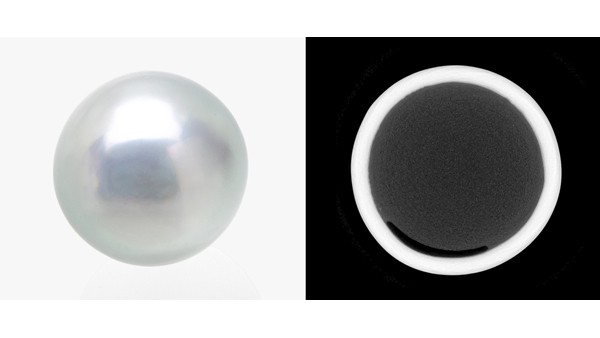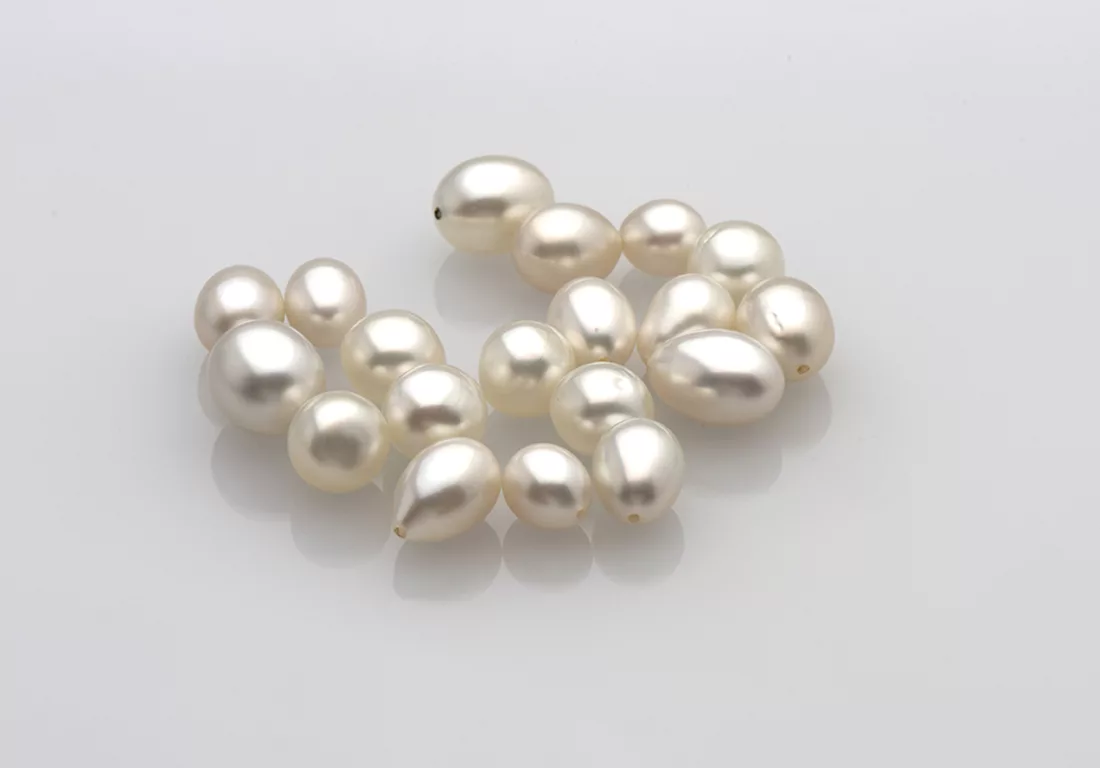
Chasing Cultured Pearls at SSEF: Cultured Pearls using a Natural Pearl as a Bead
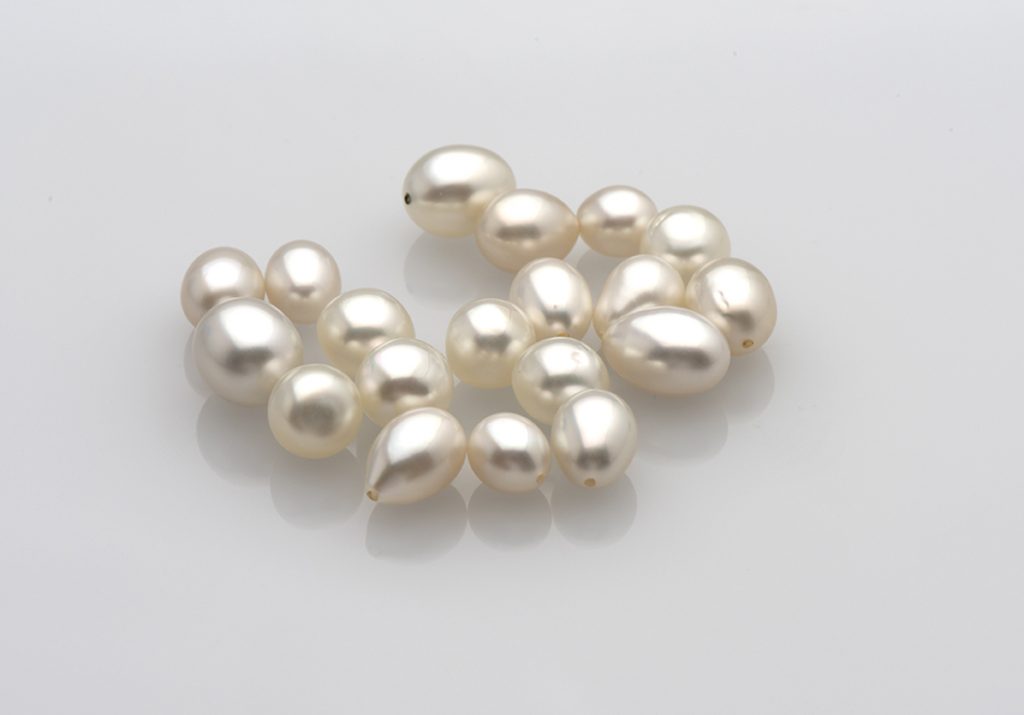
As a leading pearl testing laboratory worldwide, the SSEF has analysed in the past few months a large number of pearls for our clients. Besides natural pearls of impressive size or historic provenance (e.g. the pearl pendant of Marie Antoinette and the so called Dodge pearls), we regularly identify and sort out cultured pearls which were mixed intentionally or non-intentionally into pearl parcels.
Apart from the usual suspects, i.e. beaded and beadless cultured pearls with characteristic structures, we occasionally also encountered cultured pearls with uncommon features and structures (Figure 1), such as cultured pearls using a natural pearl as a bead, worth mentioning in a short note to remind the trade about this cultured product.
Reported already years ago (Krzemnicki 2010, Hainschwang 2010), natural pearls of low quality can be used as a bead to produce a cultured pearl of larger size and better quality. So far, we have seen these cultured products mainly produced within Pinctada maxima and Pinctada margaritifera shells. In the past year, we have again seen a few such samples, ranging in size from 8 – 12 mm, mostly mixed in parcels of undrilled or drilled pearls.
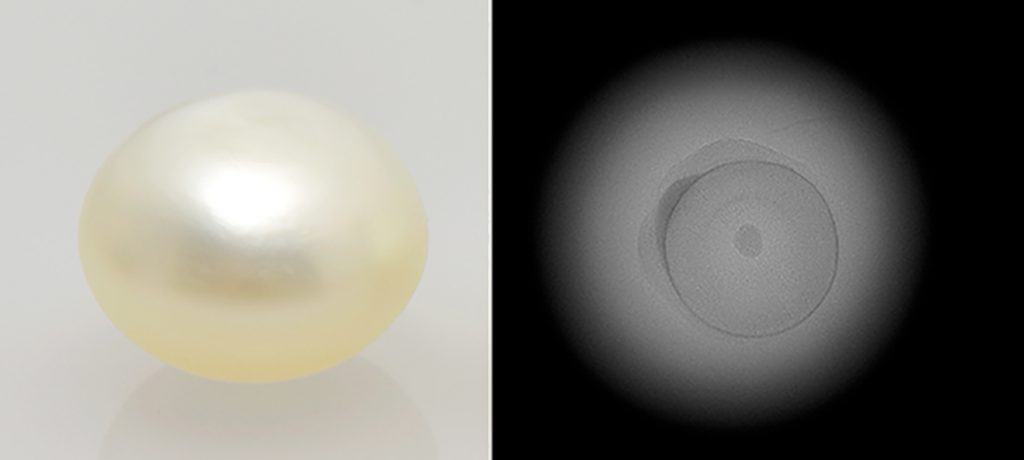
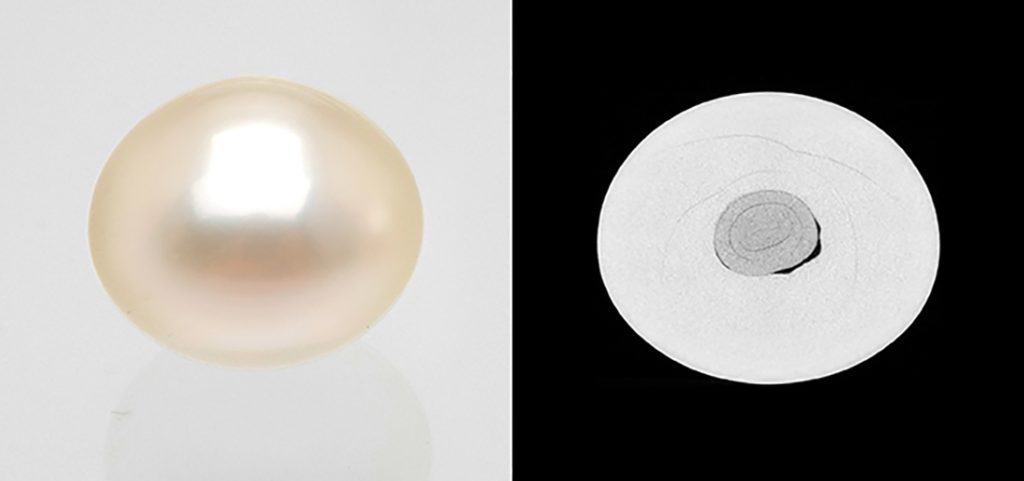
Although it is possible to already spot this through meticulous X-ray radiography analysis (Figure 2), these cultured pearls are best identified using X-ray microtomography (Figure 3), which provides a threedimensional analysis of the internal pearl structures at high resolution. The characteristic features are a clear demarcation line between the natural pearl bead and the cultured nacre overgrowth, often with a more or less conical to irregular cavity structure adjacent to the bead structure, very similar to those observed in many traditional beaded cultured pearls. Another striking feature in many of these cultured pearl products is the obvious different texture of these two parts, with the natural pearl bead mainly or completely formed by columnar calcite with many drying fissures and a nearly perfect and uniform nacre overgrowth with nearly no drying fissures.
Want to learn more about pearls?

Sign up for our free online course: Introduction to pearls
